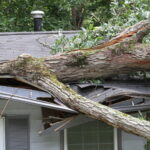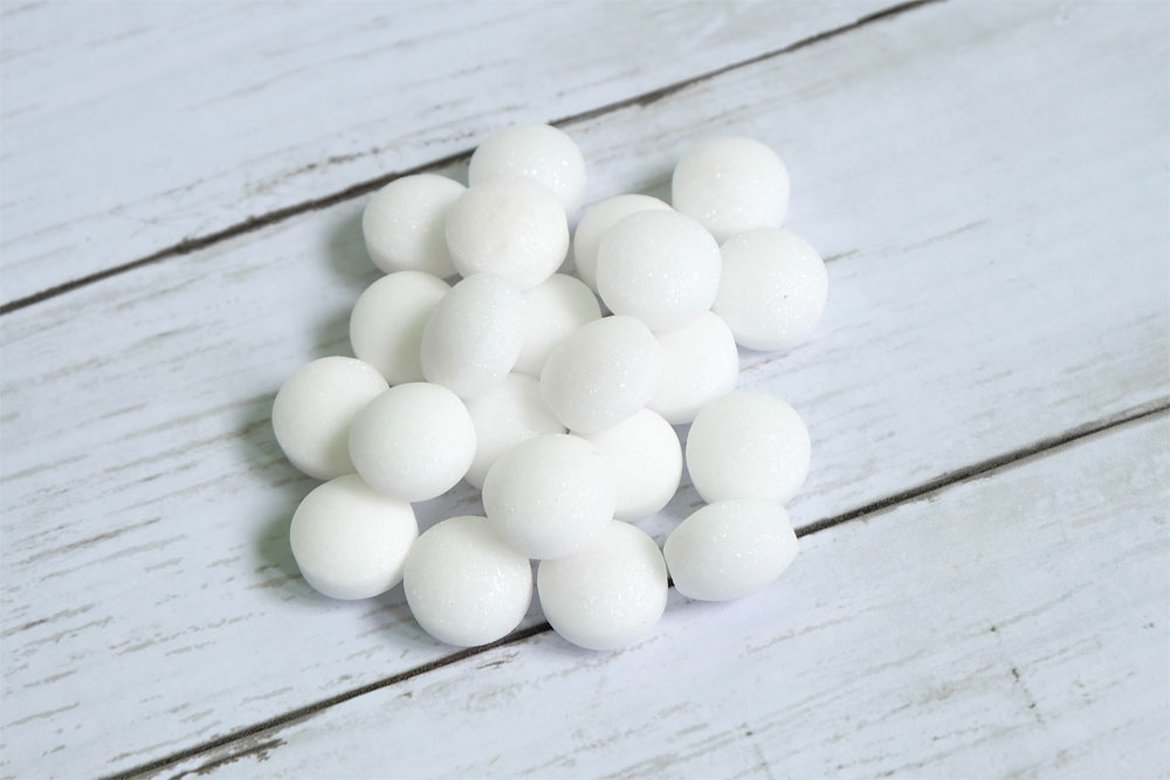You probably recognise well that pungent, chemical smell that’s usually associated with opening old, long-forgotten trunks or taking out wool sweaters from the attic.
Though tiny, mothballs can be quite effective for keeping your household free of moths. This is, actually, an old-fashioned fix that can work on other pests, too.
But how exactly are mothballs employed, and how well do they work for controlling moths? Let’s explore together the ways to apply mothballs successfully. We will also mention some safety considerations to be aware of while handling them.
What Are Mothballs?
Mothballs are typically used for protecting fabrics and bedding, especially in storage. But they can serve multiple purposes.
They’ve also been commonly employed as a type of pesticide. Its fumes are meant to repel or kill pests, especially moths and their larvae. The strong gas is usually formed from naphthalene or paradichlorobenzene. Both of these compounds are harmful to insects.
When moths lay eggs on clothes, the larvae that hatch from them can seriously damage anything made from wool, silk, or cotton. The naphthalene and paradichlorobenzene compounds should discourage the moths and serve as a lethal trap for their larvae.
Moth Pest Control
Mothballs are often used for pest control against insects hiding in clothing items, such as moths and carpet beetles. After all, nobody wants to find holes in their favourite winter jumpers when their season comes. And that’s where mothballs come in handy.
Clothes constructed from animal-based materials are particularly susceptible to these pests. Moths regard your wardrobe as a buffet, especially when unattended for long periods of time.
Protect your closet by placing mothballs in a sealed storage area along with your clothing. This way, the chemicals within will gradually leak into the contained space, making the environment hostile to intruders.
The fumes will either kill the moths and larvae or repel them so your clothes stay intact. However, the gas needs to build up to be effective. Therefore, it’s very important to use mothballs in well-secured areas, such as airtight bags or sealed containers.
The gas will evaporate easily in an open area, hence, the mothballs will be useless in any other conditions.
Using Mothballs Beyond Clothes
Though the word “mothball” implies that the product’s main purpose is to fight moth infestations, it can help control other pests, as well.
People have been known to use these spheres for many things. This includes discouraging mice, snakes, and other small creatures from invading basements or attics.
Don’t get overly excited, though, as mothballs come with their limitations and should be used carefully.
They are not as effective in certain conditions, and they aren’t always successful in repelling bugs or rodents. Especially when an infestation has been developing for some time without control.
As the fumes are poisonous when inhaled, using mothballs outside of secured storage can pose a health risk for people and pets. So try to limit your exposure to the fumes and don’t use the product in vegetable gardens where you grow food.
In fact, some pest control companies even advise against using mothballs overall. They are recommended only for managing clothes moths and related fabric-consuming pests.
There are better and more effective solutions for handling rodents and other pests. You can try actual traps or professional extermination services instead.
The Science Behind Moth Pest Control
You are probably wondering why moths are such a concern. Also, what gives mothballs their great efficiency against them?
Understanding the lifecycle of a clothing moth can help you grasp this more easily. For starters, we need to clarify that the adult moths are not the ones that damage clothes. Rather, it’s the larvae which consume wool, fur, fibres, and even feathers.
As the larvae grow into adult moths, they settle into items made of natural materials. If untreated, a fully-developed infestation can leave your favourite clothing covered in holes.
So, targeting the moths at their most susceptible stage stops their development before they can become destructive. Growing inside an enclosed environment is when they are most vulnerable.
This is where mothballs come in. When strategically placed, the larvae will get poisoned by the chemical fumes emitted by the white spheres.
Safe Use of Mothballs
Although mothballs are a great weapon against moth invasions, their active components make them dangerous to humans. So they should be handled carefully at all times.
Inhaled or consumed large doses of naphthalene and paradichlorobenzene can lead to serious health issues. This is why anyone relying on this pest control method needs to follow the instructions strictly.
- Mothballs should always be used in well-sealed containers. They should never be left out in the open. This will cause the chemicals to spread inside your home and endanger your health.
- Extended exposure to mothball fumes can cause headaches, nausea, and even respiratory problems.
- Mothballs should be kept out of reach in homes with small children or pets. Should the chemicals be ingested, seek immediate medical help to prevent the risk of poisoning.
Alternatives to Mothballs
If the dangers of using mothballs discourage you, there are other, more environmentally friendly approaches to eliminate the winged pests.
Popular natural deterrents for moths include cedar chips or cedar oil. Though these don’t kill them as mothballs do, the natural oils of cedar wood are effective insect repellents.
Protect your clothing without worrying about harmful chemicals by arranging cedar wood blocks or hangers in your wardrobe and drawers.
Another natural solution for repelling moths islavender sachets. They have a strong smell, which the flying insects find unpleasant. It is not as strong as the one of mothballs, but it can serve as a mild deterrent. Your clothes will smell amazing, too!
Finally, there are also pheromone traps available. They are a more modern method to manage moths, as they draw out the adult ones and capture them. This method should stop their reproduction cycle.
Professional Moth Pest Control Services
Sometimes, however, a severe moth infestation requires a more drastic approach. More often than not, mothballs and other do-it-yourself remedies turn out to be insufficient. In these situations, it is best to bring in experts in moth control.
They can evaluate the severity of your problem and provide remedies that are safe, effective, and customised to your particular circumstances.
Your best bet for a major or an ongoing infestation is also the pros’ access to specialised products and machines. They operate with equipment which is not easily available.
Pest control services typically include comprehensive house inspections to identify the source of the infestation and treatment of the infected areas.
Additionally, companies offer follow-up checks to guarantee the moths are eradicated for good.
The pest control professionals also make sure that the chemicals used in your house are applied responsibly and safely. They know how much and where to apply for maximum effectiveness.
Conclusion
Using mothballs is a tried-and-proven approach for managing clothes moths. Ultimately, keeping a moth-free closet depends on appropriate storage, quick response, and knowledge of the best pest control techniques.
Whether you choose expert assistance, natural repellents, or conventional mothballs, the secret is to stay alert and apply the solutions as per the instructions.










